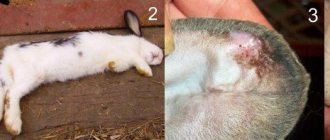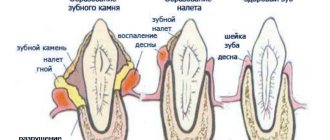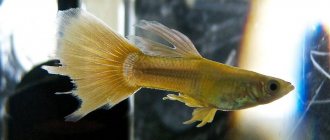Aquarium fish, like residents of open water bodies, are susceptible to various diseases. In an aquarium it is much easier to diagnose the disease and begin treatment on time.
How to recognize the main contagious and non-contagious diseases of aquarium fish, and what means to use to combat them, you will learn from our article.
- Alkaline disease of aquarium fish
Contagious diseases
As mentioned above, infectious diseases are provoked by a pathogen (bacteria, fungus, etc.). Depending on the type of disease, characteristic symptoms of the pathology appear.
In order to diagnose the disease in time and carry out the correct treatment, you need to know certain signs of popular diseases and be able to deal with them.
Fin rot: treatment
At the initial stage, it manifests itself as a faint bluish-white clouding of the edges of the fins and sometimes the cornea of the eyes. Gradually, the ends of the fin rays begin to fall off, their edges become disheveled (Figure 1).
Note: In juveniles, the caudal fin disappears completely. Ulcers appear at the base of the destroyed fins, the spinal column is exposed and the pets die.
The cause is an infectious disease that destroys the fins. The role of the pathogen is the rod. The disease develops due to poor care, as well as infrequent water changes. The disease affects labyrinthine, neon species, as well as angelfish and barbs. The fry are most affected.
Figure 1. Signs of fin rot
To stop the disease it is necessary to improve the care of pets. If the fins are severely damaged, medications must be used. For example, you can arrange medicinal baths in a separate container. It is also necessary to regularly disinfect the aquarium, soil, and equipment. Treat plants with bicilin-5.
Signs of the disease
Healthy fish have uniform color, beautiful appearance and calm behavior. Any deviation from the norm indicates problems.
Symptoms of fish disease include:
- Changes in behavior (apathy, increased anxiety);
- Change in appearance (color, appearance of mucus, plaque, change in body volume);
- Eye damage (formation of a cloudy veil, white spots, loss of an organ);
- Damage to fins (sticking together, spots, tears, changes in size);
- Damage to the gills (change in size, mucus formation, lack of function);
- Change in the appearance of scales (appearance of bald spots, swelling, damage).
The presence of one or more signs is a reason to consult a specialist and carry out prevention and treatment of your pets.
Non-communicable diseases
Despite the fact that non-communicable diseases do not pose a great danger due to their inability to spread quickly, their signs should not be ignored.
Since in most cases such ailments are caused by improper maintenance or feeding, it is necessary to review the diet of the fish, change the water or filter.
Alkaline disease of aquarium fish
The main driver of alkaline disease is increased levels of acidity, which can be detrimental to some species (Figure 11).
Note: The disease can occur acutely with a sharp change in pH, or chronically with a gradual change over a certain period of time. Alkaline water irritates the outer surface of the body.
Minerals dissolved in water increase the acidity of the water, help stabilize the pH, and the metabolic processes that occur in fish have an oxidizing effect, which counteracts the increase in alkalinity of the water.
Figure 11. Signs of alkaline disease
If you transfer fish from one aquarium to another, you should be aware of the acidity level, otherwise you may encounter acute alkalosis. A suitable pH level can be achieved using a pH buffer. To slowly adjust the pH, use a partial replacement of water with a liquid with neutral acidity.
Argulez
The disease is caused by a blood-sucking parasite, which provokes an inflammatory process in the wound, characterized by the release of mucus on the body, redness and swelling. The fish sways and rubs against objects (Figure 12).
The pathology is caused by the carp-eating crustacean, which pierces the skin and sucks blood, releasing a poisonous secretion. The carp eater breaks the skin, which leads to infection with various diseases. Carp eaters sit on fish only when they are hungry, the rest of the time they are on different objects. Small individuals can die from one bite of a carp eater.
Figure 12. Manifestations of argulosis
For treatment, all inhabitants are transplanted into another container. The individual with the attached parasite is placed on a damp swab, and the carp eater is carefully removed with tweezers. Then wash with potassium permanganate.
Gonadal cyst
It often occurs chronically. The abdomen with liquid or semi-liquid contents increases in size due to the tumor. By starting treatment in time, you can save the female from infertility and death.
Note: The cause of the disease is the long-term separate keeping of males and females, as well as monotonous feeding of dry food.
At the initial stage of the disease, the fish is placed on wet cotton wool and the abdomen is lightly stroked so that the contents of the cyst come out through the anus.
Acidosis or acid disease
The disease is not immediately visible. The affected individual moves and swims less and begins to be afraid. Swims on its side or belly up. The gill covers contract convulsively, their movements are slow. The color fades and milky spots appear. Fish die in plants, their bodies are curled into a ring, and their gills and mouth are closed.
Pathology appears from a low or sharp decrease in pH levels. If the decrease in pH was gradual, then you can increase it in two ways: change the water in the aquarium more often or add drinking water to it.
The author of the video will tell you what means can be used to prevent diseases.
General information
Ichthyopathology is a scientific discipline that studies diseases of aquarium fish. Their treatment is not always successful, but it is possible. Ailments are classified into the following types:
- contagious, which are divided into infectious and invasive;
- non-contagious.
Infectious diseases are caused by single-celled organisms: viruses, fungi, protozoa and bacteria. Invasive ones are caused by helminths and arthropods (multicellular animals).
Fish diseases may or may not be contagious.
Non-communicable diseases are caused by chemical or physical damage. This is due to poor quality care and conditions for keeping fish. Poor care means:
- temperature violation;
- poor quality water;
- entry of toxic substances into the aquarium;
- improper feeding;
- poor nutrition.
Physical damage is caused by the arrangement of the aquarium. It is enough to provide your pets with proper care and the likelihood of illness will be reduced.
Ichthyophthiriasis (semolina)
Have you noticed nodules or white bubbles on the body of the fish, reminiscent of lumps of semolina? Your pet is unhappy with the temperature of the water or the dirt, so she has contracted an infection caused by the ciliate ichthyophthirius. The signals are:
- Lack of appetite.
- Slow breathing;
- Impaired coordination of movements.
- Decreased activity.
- Weight loss.
In addition to bicillin-5 and trypaflavin, it is worth treating your betta fish in a salt bath.
Attention! Don’t think that just adding table salt will make the bacteria disappear. The recommended proportions must be carefully observed: non-compliance with the technology and excessive saturation of the solution lead to the death of the cockerel.
Prevention
Treating aquarium fish is quite difficult. It is not always possible to accurately determine the cause of the disease and select the appropriate medicine. In addition, it can be difficult to calculate the dosage of the drug. Therefore, it is important to pay attention to disease prevention.
Prevention of fish diseases is carried out in the following ways:
- fish are kept and fed correctly: water parameters are monitored, they are regularly replaced and the soil is cleaned, an organoleptic assessment of the feed is carried out before feeding;
- acquired fish, shellfish and arthropods are quarantined for 2-4 weeks;
- purchased plants are treated with a weak solution of potassium permanganate;
- New decorations and soil are disinfected before being placed in the aquarium.
Dropsy
The main symptom of this disease is a greatly enlarged, swollen tummy. Red spots appear at the base of the fins and on the abdomen. Sick fish refuse food completely and quickly lose weight.
Causes of dropsy: viral infection, fungal infection, unbalanced diet, improper living conditions, decreased immune potential.
Treatment is effective only at the beginning of the disease. Complex antibiotics are used. The aquarium and equipment must be completely disinfected. If a betta fish has a very swollen belly, unfortunately, it dies.
Columnaria
The disease is caused by the gram-negative bacteria Flexibacter columnaris. The disease is also known as “mouth fungus” due to the similarity of symptoms to a fungal infection.
The following factors contribute to the development of the disease:
- overcrowding in aquariums;
- increased concentration of organic matter in water;
- violation of care rules;
- rapid breathing;
- insufficient aquarium volume.
Sick pets become lethargic, apathetic, swim jerkily, stay near the bottom, and hide in aquarium decor, plants, and shelters. The gills and oral cavity are severely affected. With severe damage, the gills become necrotic and acquire a light brown or, conversely, darker color. The accumulation of fluid in the eyes of fish signals damage to internal organs.
To prevent the spread of infection, treatment for columnaria begins in the initial stages of development. Systemic complex antibiotics are used. Disinfect the aquarium.
Preventive methods
It is easier to prevent diseases than to treat them in a neglected state. If you follow simple maintenance rules , you can protect your fish from diseases:
- weekly cleaning of the aquarium with replacement of ¼ volume of water;
- transplantation of excess individuals;
- cleaning traumatic scenery;
- quality food 1 or 2 times a day;
- temperature regime of water, each species has its own;
- proper transportation of pets;
- using a thermostat in winter;
- quarantine for newcomers;
- disinfection of everything that interacted with sick fish;
- high-quality drugs in the correct dosage for treatment.
Care, timely care and nutritious food will protect your favorite fish from diseases and injuries. Regular cleaning of the aquarium will help avoid many troubles.











